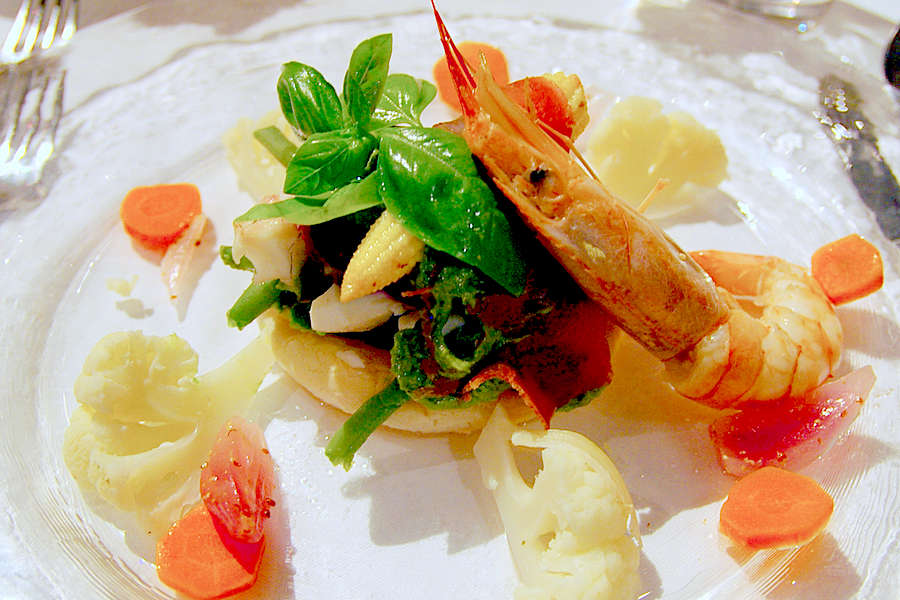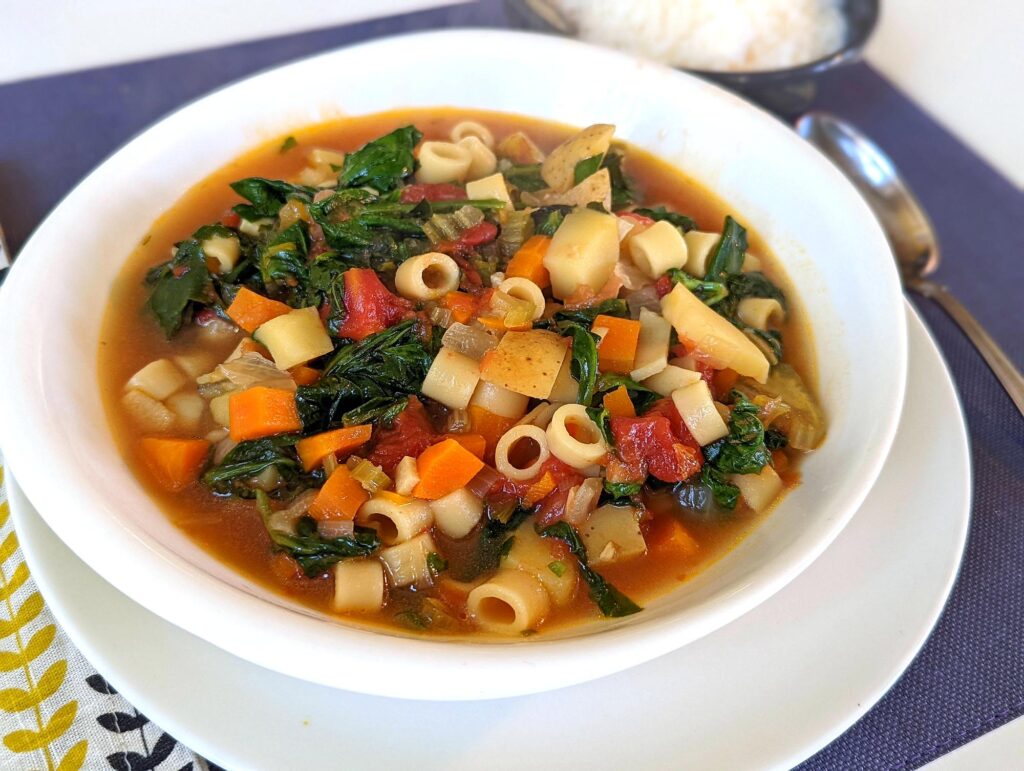
One of the smallest regions of Italy, Liguria wraps around the salty rim of the northern Mediterranean. It is a great place to eat. The mountain conifers and herds of sheep provide Liguria’s pine nuts and cheese. Groves on the foothills above the sea yield a delicate olive oil. The farms sprouting on the thin strip of arable coastline abound in intensely perfumed basil. The village of Boccadasse, on the east end of the capital city of Genoa, is home to fishing boats that supply the city’s restaurants.

When David visited a few years ago, he wandered the ancient streets of Genoa, marveling over Baroque palaces built with wealth from bankrolling Spain’s New World adventures. Even some of the most modest 17th century homes on narrow alleyways are adorned with intricate, masterful carved stone lintels, including this one depicting St. George (a favorite motif in regions that battled with the Saracens).
Eventually, all streets lead down to the sea—and to the trattorias, salumerias and fish-fry shops of Via Sottoripa along the waterfront. This bustling stretch of food sellers is the best destination to taste Sant’ Olcese, the true Genoa salami, and swoon over tender calamari cooked in bubbling vats of Ligurian olive oil. Those same friggitorias also specialize in lightly breaded and crisply fried bianchetti—anchovy spawn—meant to be eaten heads and all.

David also visited Liguria’s agricultural experiment station, where plant breeders tinker with the iconic Genovese basil. The photo across the top shows just one flat in an entire greenhouse of a new variation selected for compact stems and especially aromatic leaves. And some of the city’s finest restaurants, like I Tre Merli (Calata Cattaneo 17, Genoa; +39 010 246 4416; itremerli.it), make superb use of basil with the local seafood, as in this delectable prawn and basil salad.
In the final analysis, it all comes down to the basil
We still grow Genovese basil in the garden every summer. At the height of the season, our meal plan is very Ligurian. When we’re not eating tomatoes and cheese showered in basil, we’re eating a pasta dish tossed with fresh pesto. Sometimes, we combine all the fresh tastes of summer into one big pot of minestrone, made the Ligurian way with quickly simmered basil and other greens. Even in the depths of February, we can recapture some of that summer joy by using good canned tomatoes and the best available hothouse basil. Here’s the recipe that we adapted from Judith Barrett’s 1999 cookbook Saved by Soup.
LIGURIAN MINESTRONE
INGREDIENTS

- 1 tablespoon olive oil
- 1 large onion, finely chopped
- 3 large cloves garlic, finely minced
- 2 medium carrot, peeled and cut in small dice
- 2 celery ribs, trimmed and cut in small dice
- 2 medium potatoes, unpeeled, cut in medium dice
- 2 small zucchini, cut in medium dice
- 8 ripe plum tomatoes, peeled and diced
- or 14 oz. can of chopped tomatoes with juices
- 4 cups chicken stock
- 1/2 cup small pasta (ditalini are good)
- 4 cups packed (about 5 oz) well-rinsed and roughly chopped baby spinach
- 1/2 cup chopped fresh basil leaves
- sea salt and freshly ground black pepper
- 2 tablespoons freshly grated Parmigiano-Reggiano cheese
DIRECTIONS
Heat oil in 4-5 quart soup pot over medium high heat. Add onion, garlic, carrot and celery and cook until they begin to soften (about 3 minutes). Add potato and zucchini and stir well to combine. Then stir in tomatoes and stock. Turn up heat and bring to a boil before reducing heat to simmer for 30 minutes.
Add the pasta and cook, stirring frequently so it doesn’t stick to the bottom, for about 10 minutes (until tender).
Add the spinach and basil, stir well to combine, and cook another 5 minutes. Season to taste with salt and pepper. Serve with grated cheese sprinkled over the top.
